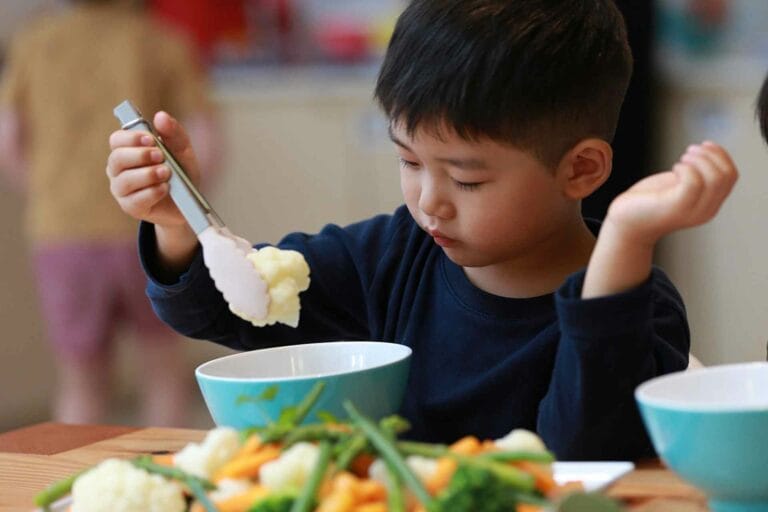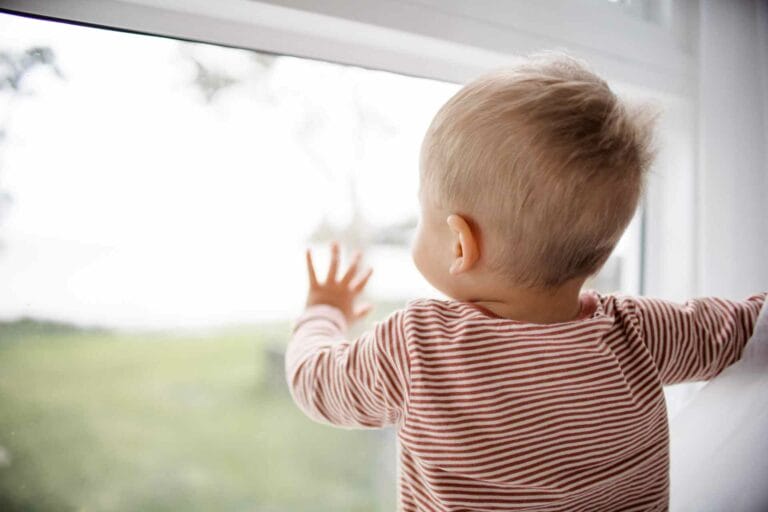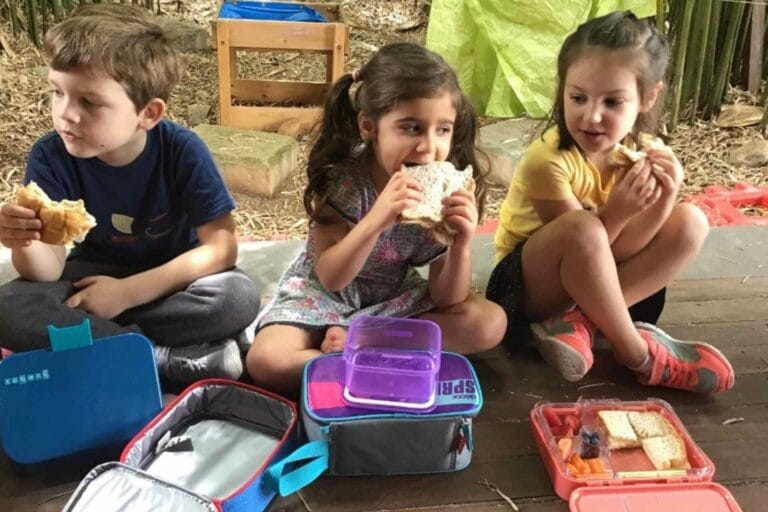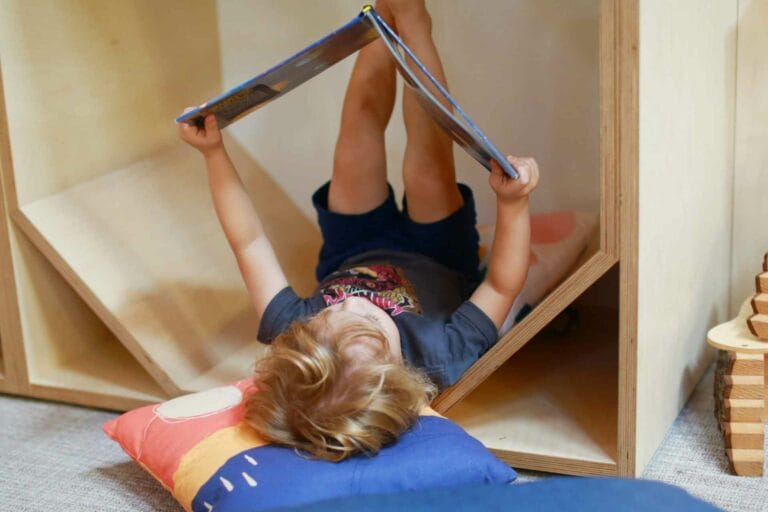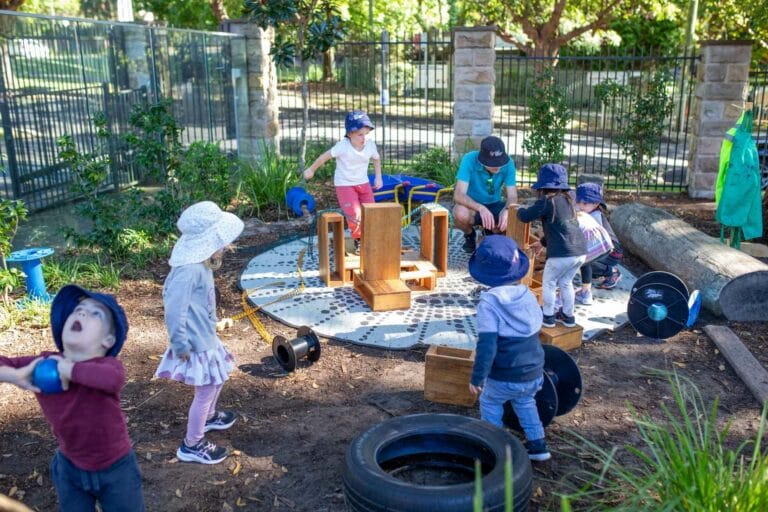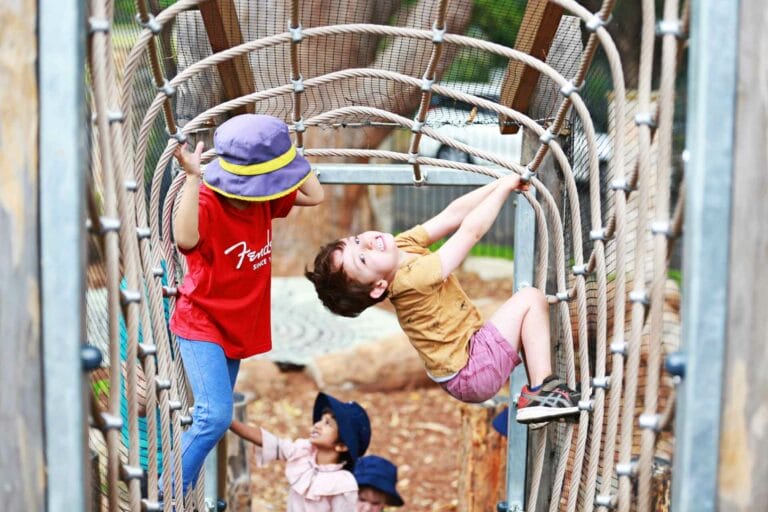Exploring Nature Play
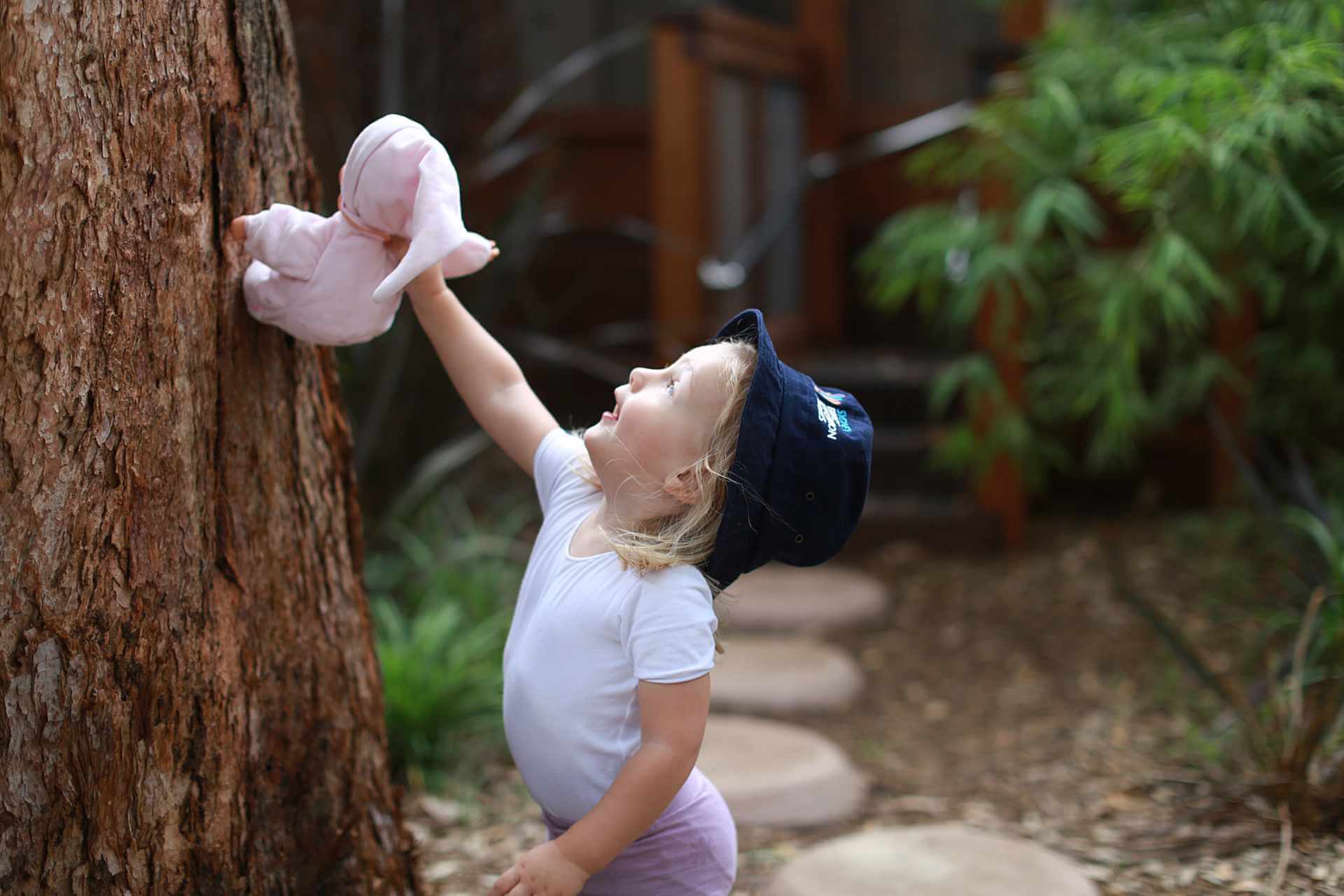
What is nature play?
Flashback to your earliest memories, going for a bushwalk with your family and balancing on a log to cross the shallow creek, whilst pretending to be a fairy with your best friend fairy flying behind you. Remember collecting stones and twigs around the front garden and making patterns and words with them on the front porch. And don’t forget the time when you were camping, and you counted all the tiny tadpoles that you collected in a jar, noticing the 2 big ones that had started to grow legs already, before putting them back in the creek. These are all examples of nature play.
Nature play goes beyond just playing or being outdoors. According to ‘First Five Years’ and MacDonald et.al, nature play is creative and imaginative play that is open-ended and unstructured. For a child, it is sensory-rich, and collaborative and includes being curious about their surroundings and solving problems. Nature play is naturally exciting, fun, free and educational since we know that learning never stops.
Take your child into nature and give them access to green spaces (MacDonald et al). Give them the freedom to engage in unstructured play and they will create their play using the natural materials that surround them. Your child will lead, make choices and interact with natural elements within outdoor spaces. How enticing does play and exploration with plants, flowers, grass, boulders, stones, sand and dirt sound? Children will naturally be drawn to jump over, walk on, climb over, swing on, climb on, hide behind, and balance on natural structures, whilst adding elements of dramatic play and imagination. Nature play can be as simple as relaxing and resting on some grass and looking up at the sky and trees around you, according to MacDonald et. al. Nature play should happen all year round and can happen in all types of weather. It’s all about the right clothing!
Cutter-Mackenzie-Knowles et. al. reminds us of the roots of nature play and its deep history in Early Childhood Education. It was the “Scandinavian “forest school” model and Germany, Finland and Denmark’s long tradition of nature play” that recognised the benefits on children’s learning, development and wellbeing. Research into nature play consistently highlights the positive influence on a child’s lifelong learning journey and how simple and important it is to have regular access to nature play.
The benefits of nature play
The benefits of nature play encompass all aspects of a child’s learning, development and well-being. ACECQA highlights the physical and social learning that takes place when children are playing in nature independently and with their peers. It builds a child’s learning dispositions as well as their natural curiosity, creativity and their ability to be respectful, equitable and reflective. Most importantly, nature play also expands a child’s abilities in their 21st century skills, which are the skills that are considered vital in the modern world. (Alme et.al.):
- Problem-solving
- Critical thinking
- Leadership
- Teamwork
- Communication skills
- Pro-social behaviour.
What about the positive effects of nature play on a child’s lifelong learning, according to Alme et.al., Cutter-Mackenzie-Knowles et. al. and MacDonald et. al.:
- Self confidence
- Self esteem
- Self regulation
- Language and communication
- Academic skill
- STEM knowledge and skills
- Knowledge and understanding of the natural world
- Exploring and understanding emotions
- Autonomy
- Decision-making skills
Nature play and risky play overlap but these pedagogies are not interchangeable. Nature play includes balancing on a log and collecting leaves and gum nuts in a basket, both with varying degrees of risk (MacDonald et. al.). A child needs to learn to manage risk and develop an understanding of safety whilst experiencing the sense of achievement that comes with risky play, according to ACECQA. Give your child support when it is required or requested but also allow your children the space and freedom to make decisions and manage their risks in their play. The benefits far outweigh the risks.
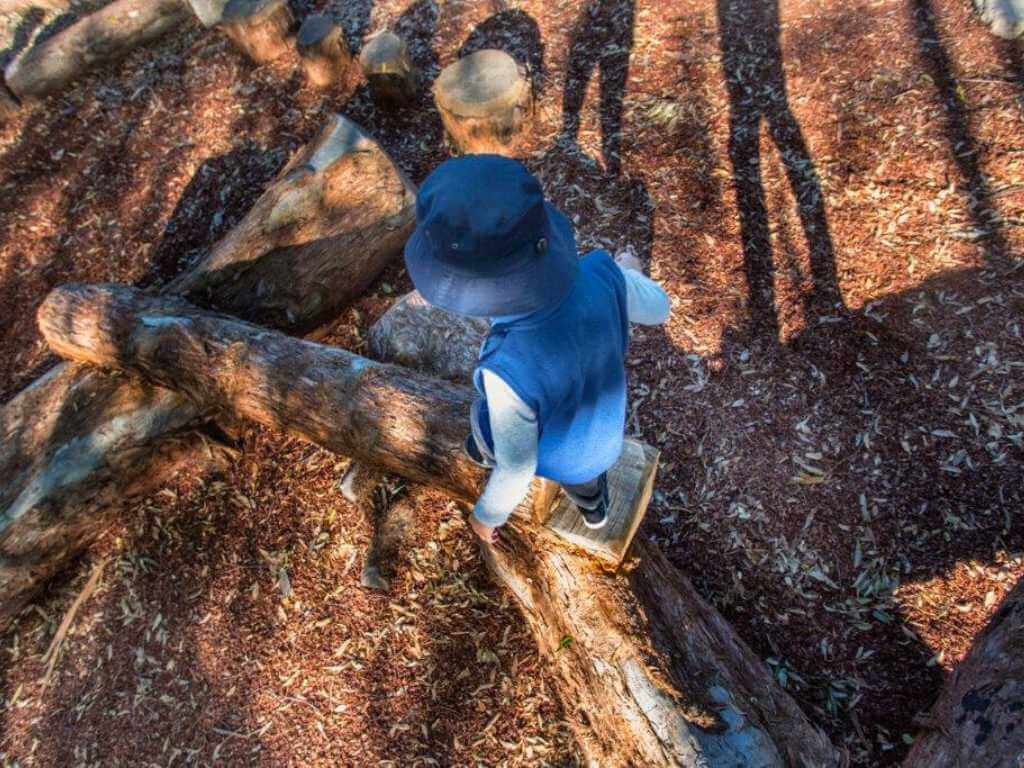
At Sydney Early Education Centres, our philosophy advocates for a; “safe and challenging natural learning environment … to inspire exploration, creativity, questioning, and to help make meaning of the world” and is supported by our policies, procedures and practices that advocates for nature play. Our physical environments were rated as exceeding under the National Quality Standards, and they each support the children’s access to play in our nature based outdoor learning environments.
SEEC’s nature play supports children’s engagement with Aboriginal and Torres Strait Islander understanding of and care for country. Getting out into nature beyond the centre gate is also supportive of community links and making active contributions to the community (ACECQA).
Sustainability is also featured heavily in our curriculums to support educators and teachers in embedding practices that connect children to the natural environment and advocate for its ongoing survival. The EYLF and the UN Sustainable Development Goals foster a child’s understanding of their responsibility to care for the environment and develop their dispositions towards sustainability and a deep connection to nature (Green et.al.)
What are the barriers to nature play?
Most families, according to Rhodes, would like their children to spend more time outdoors, but less than half of children play outdoors most days. Time, safety concerns and the weather are the main reasons for children not getting out into nature. MacDonald et.al. and ‘First Five Years’ also note other barriers to children being involved in nature play and these include:
- Children not wearing the right clothing and shoes
- Parents wanting to avoid messy play
- Gender bias
- Technology
- Living in built up neighbourhoods, making it hard to access green spaces
- Children being seen as lacking the physical and cognitive capacity
- Child personality traits such as shyness and less confidence
How can families get involved in nature play?
The ideas are endless but here are a few to get you started!
- Plan for family time outdoors regularly – visit beaches, parks, bush trails/lakes and rivers
- Dress your child appropriately for nature play and the weather. A raincoat and gumboots, and a warm jacket are perfect for cold or wet weather
- Discover loose parts play with twigs, stones, leaves and other natural materials you find while exploring nature
- Bring along resources such as a magnifying glass or basket to enhance the experience
- In smaller spaces, get creative with worm farms, plantar boxes, and water play
- Boost a child’s confidence with positive self-talk and guiding language, brainstorm challenges
- Explore nature with friends to support children imitating and encouraging each other
- Encourage children’s natural curiosities
- Advocate for nature play with other families
- Listen to nature’s music – what birds and animals can you hear?
- Sit under a tree and look up
- Plant a seed and watch it grow
- Explore mud and sand play, add water for extra adventure
(First Five Years, Department of Health and Aging, MacDonald et.al., Nature Play Queensland)
References
- Cutter-Mackenzie-Knowles, Lasczik, Malone, Knight, Paquette & Osborn (2021). Children learn science in nature play long before they get to school classrooms and labs. Charles Sturt University.
- Nature Play Queensland. https://natureplayqld.org.au/nature-play-ideas
- MacDonald, J.B., Bulter, K., & Alla, K. (2023). Engaging young children (0–5 years) in nature play (Practice Guide). Melbourne: Child Family Community Australia, Australian Institute of Family Studies.
- Green, Christopher & Turner (2022). A Content Analysis of Documentation of Nature Play in Early Childhood Teacher Education Programs in Australia. Australian Journal of Teacher Education (Volume 47, Issue 5).
- ACECQA (2023). Information Sheet: The How and Why of In-Nature Programs.
- Alme & Alvestad Reime (2021). Nature Kindergartens: A Space for Children’s Participation. Journal of Outdoor and Environmental Education. 24: 113-131.
- Department of Health and Aging. Get Up and Grow; Getting Out and About. Outdoor Active Play.
- First Five Years (2020). The Benefits of Nature for Children.
- Rhodes (2023). RCH National Child Health Poll. Australian Families: How we Play. The Royal Children’s Hospital Melbourne

Written By
Melissa, CEEC Educational Leader
